I'm trying to create a parallax background effect in pygame i.e., each layer of the background will move at different speeds.
Here is the code I've written,
import pygame
pygame.init()
surface_width=576
surface_height=200
screen=pygame.display.set_mode((surface_width,surface_height))
clock=pygame.time.Clock()
dx=0
dy=0
bg=[]
for i in range(1,6):
back=pygame.image.load(f'{i}.png').convert_alpha()
bg.append(back)
width=bg[0].get_width()
height=surface_height-bg[0].get_height()
run=True
while run:
clock.tick(60)
for x in range(-3,3):
speed=1
for layer in bg:
screen.blit(layer,((x*width)-dx*speed,height+dy*speed))
speed+=0.8
for event in pygame.event.get():
if event.type==pygame.QUIT:
run=False
keys=pygame.key.get_pressed()
if keys[pygame.K_LEFT] == True and dx>-3*width:
dx-=2
if keys[pygame.K_RIGHT] == True:
dx+=2
if keys[pygame.K_UP] == True and dy<surface_height:
dy+=2
elif keys[pygame.K_DOWN] == True and dy>0:
dy-=2
pygame.display.update()
This works fine, when the range is in positive values i.e., the x coordinates are positive. But when they are negative as in the above code, I start facing issues when trying to move left to the negative x coordinate.
I suspected it to be an issue with the sequence of blitting and tweaked things a bit but I couldn't get any successful results.
Another thing, I've observed is that I only face this issue when the layers are moving at different speeds. If I removed the speed+=0.8 part, the code works as intended (obviously without the parallax effect)

